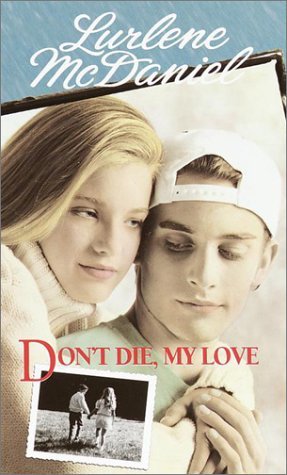
If you’ve ever watched a Kleenex-depleting Lifetime movie of the week and wondered what sparked within you this desire to be entertained by tragic life circumstances, it’s pretty likely Lurlene McDaniel and her deliberately tear-inducing young adult books can shoulder some of the blame. A satisfying cry can do all of us some good at times, but even the most fervently feeling among us have our limits. It may seem sort of fun at first to wallow in tragedy and despair, but after forty books featuring taglines about teens who “died too young” or “never had a chance,” it becomes a tad tiresome.
McDaniel’s loosely related teen book series operated on the principle that if one is good, several dozen must be better. Quantifying death and heart-wrenchingly tragic disease is a major undertaking--no in-bad-taste death pun intended--and apparently a challenge to which Lurlene McDaniel saw fit to rise. Even her biography on her personal website acquiesces that parents often find the themes of her books incredibly depressing and tiresome, which doesn’t sound like much of a positive sales pitch. In defense of her sob-story novels, the Random House website offers the following quote from McDaniel:
“I write the kind of books I write because I want to help kids understand that nobody gets to pick what life dishes out to them. What you do get to choose is how you respond to what life gives you. No matter what happens, life is a gift. And always worth living."
When she puts it that way sounds like an admirable endeavor--who doesn’t want to read an uplifting story full of promise and hope? Unfortunately, the books don’t always frame their inevitable tragedies in that light. McDaniel’s claim that people don’t get to choose their lot in life is certainly true and makes for a good writing philosophy in theory, though in practice her books are the stuff excessive juvenile hypochondria is made of.

I was, admittedly, a fairly devoted fan in my teen and preteen years. I can understand the mysterious allure of McDaniel’s themes. In some ways, her books romanticized the tragedy of young people suffering from life-threatening illnesses, casting them on the cover in soft-focus lighting with pensively forlorn facial expressions. While these books at times admirably offered a realistic view of teenagers with major medical issues, in other instances they veered into adolescent soap opera stock material. McDaniel clearly did put in the time and effort to research the medical terminology and circumstances, but all the underlying validity and realism in the world can’t save a premise about two friends vying for the same heart transplant.
In the case you never had the pleasure of crying your eyes out over one of these disease-stricken young adult novels, here’s a handy illustrative guide to their dripping sentimentality:
1. The books generally have a title a la Movie of the Week; something like She Died Too Young, Mother, Help Me Live, or Sometimes Love Isn’t Enough. Those are actual titles from McDaniel’s official book list--I couldn’t make this stuff up.
2. Many of Lurlene McDaniel’s novels begin with an average, healthy teenager who spontaneously develops a life-threatening condition. Though McDaniel does devote a fair amount of attention to teenagers born with some sort of medical issue, these cases are never as terrifying to healthy readers as those who go from playing soccer and shopping with friends to spending weeks at a time hooked up to monitors in the hospital. The element of “Oh-my-gosh-this-could-happen-to-me” is alluring in a terrifying way, and is justifiably one of the main criticisms issued by parents of young readers.
 3. Cheesy dialogue and drama-ridden brooding is a key element of any good McDaniel work. To illustrate, observe the following passage from Reach for Tomorrow:
3. Cheesy dialogue and drama-ridden brooding is a key element of any good McDaniel work. To illustrate, observe the following passage from Reach for Tomorrow:They returned to the canoe, got in, and paddled in silence back to the place they'd shoved off from. Once on land, Meg caught his hand. "Thank you, Eric. I really mean that."
"Um--yeah, sure," he said, but he looked totally confused in the pale light of the half moon.
Meg stood on tiptoe and kissed him lightly on the mouth. Then she turned and hurried back toward her cabin, leaving Eric standing on the shore, shaking his head.
In nearby shadows, Morgan stood watching. So Eric had made a move and Meg had gone for it. Morgan felt an edgy spark of jealousy, an emotion he hadn't felt since before Anne died. It's a free world, he told himself. She can do anything she wants, be with anybody she wants. Still, his insides simmered.
Whether you loved or hated these emotional novels, McDaniel’s various series and stand-alone books were a young adult literary phenomenon. The popularity of her books is undeniable, offering compelling evidence that young girls love to curl up with a good sob story or forty. And in case any of you aspiring writers out there are seeking some hope and encouragement, you may want to consider taking on the genre; McDaniel’s books have been deemed so influential that Six Months to Live made it into the Library of Congress time capsule to be opened in 2089. That’s either very reassuring or very depressing--I haven’t decided yet. Either way, you may want to try your hand at cry-fest fiction--if you fail, there’s always a market for Hallmark and Lifetime Movie Network scriptwriters.






0 comments:
Post a Comment